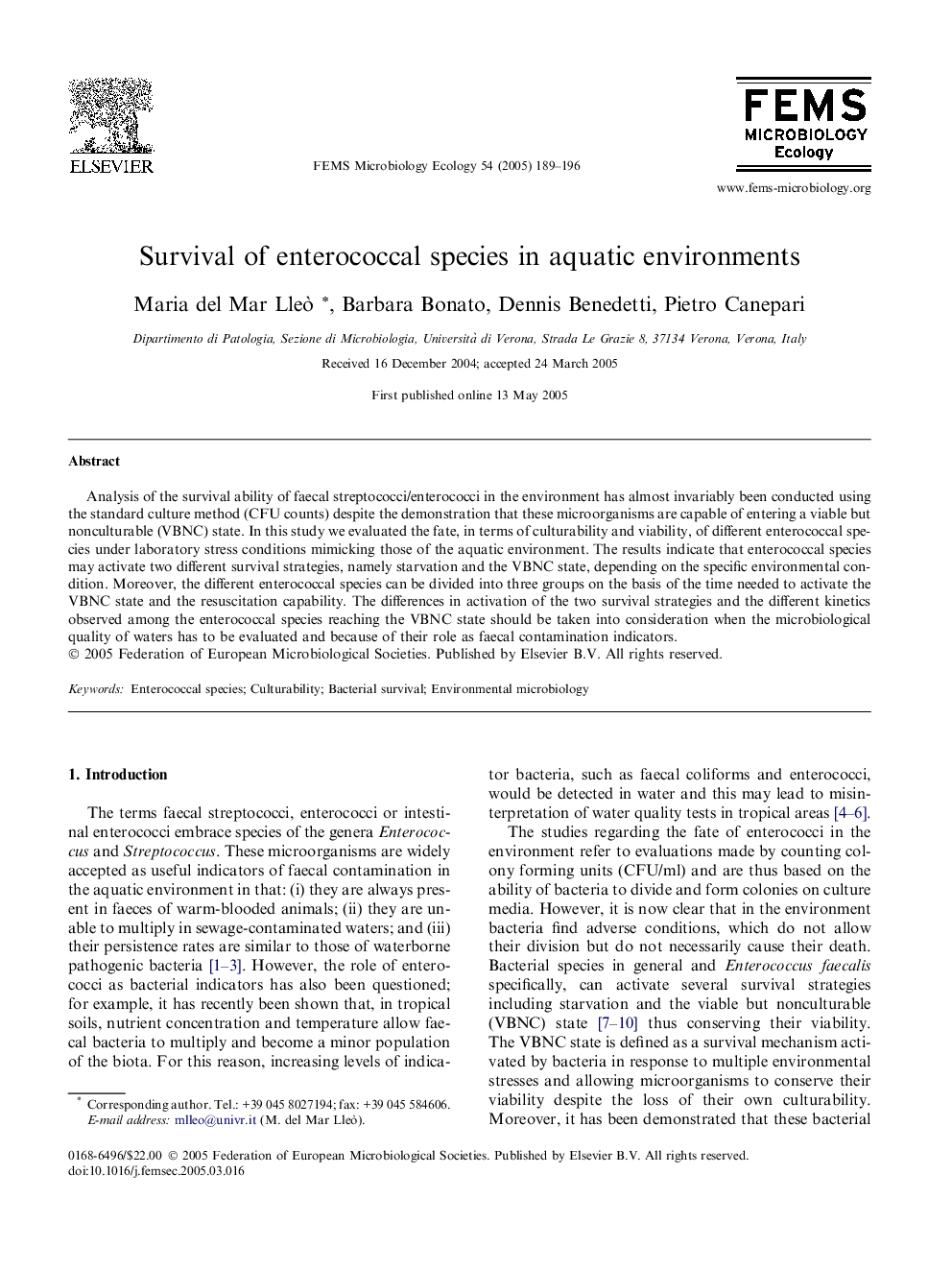| Article ID | Journal | Published Year | Pages | File Type |
|---|---|---|---|---|
| 9437647 | FEMS Microbiology Ecology | 2005 | 8 Pages |
Abstract
Analysis of the survival ability of faecal streptococci/enterococci in the environment has almost invariably been conducted using the standard culture method (CFU counts) despite the demonstration that these microorganisms are capable of entering a viable but nonculturable (VBNC) state. In this study we evaluated the fate, in terms of culturability and viability, of different enterococcal species under laboratory stress conditions mimicking those of the aquatic environment. The results indicate that enterococcal species may activate two different survival strategies, namely starvation and the VBNC state, depending on the specific environmental condition. Moreover, the different enterococcal species can be divided into three groups on the basis of the time needed to activate the VBNC state and the resuscitation capability. The differences in activation of the two survival strategies and the different kinetics observed among the enterococcal species reaching the VBNC state should be taken into consideration when the microbiological quality of waters has to be evaluated and because of their role as faecal contamination indicators.
Related Topics
Life Sciences
Environmental Science
Ecology
Authors
Maria del Mar Lleò, Barbara Bonato, Dennis Benedetti, Pietro Canepari,
